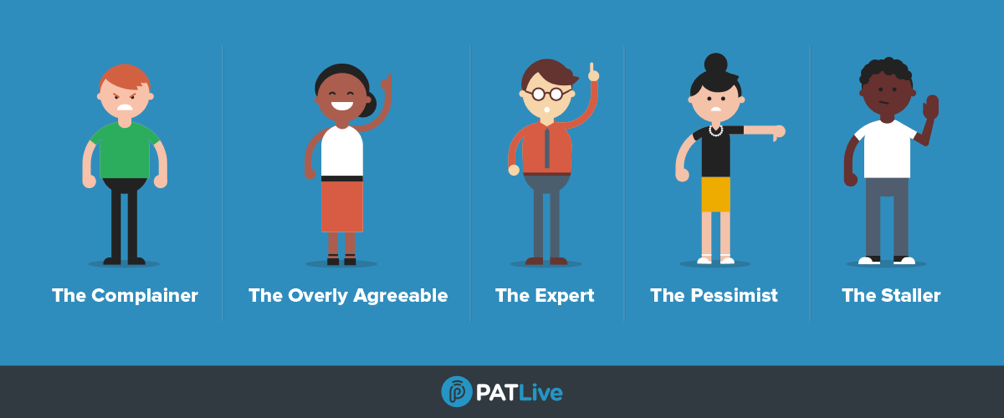The Moment When You Become Your Worst Customer
What happens when the shoe is on the other foot? What can you learn from being the customer?

By Billion Photos / Shutterstock
Recently I found myself buying graphic design services and it was a very interesting and informative experience. From the outset and initial engagement I was clear on the base concept and the output that I needed, but through the design process I found myself to be indecisive and part way through I completely changed track.
I’m sure we can all relate to these customer types that the company PATlive have coined.

- The Complainer: A business’ greatest ally, this customer has a lot to be unhappy about and you’re going to hear all about it
- The Overly Agreeable:These types will yes you to death and you never get to the root of their issues
- The Expert: They know way more about your job than you do. Trust
- The Pessimist: There’s a dark side to every solution. Well, the pessimist believes that’s true
- The Staller: Hard to convince and hesitant, the staller can be a major toughie
In my experience, as the customer I became The Staller. It was such an unusual feeling for me and it made me think about communication styles and how we treat our stakeholders.
Stakeholder management
What is a stakeholder? Ultimately it’s someone that you need to work with from another part of the business in order to get things done. But really a stakeholder is just a person and the quickest way to keep things moving in your project, is to understand that person, what makes them tick and what world they operate in. You then need to adapt yourself in order to reach a successful outcome.
As a function, procurement can sometimes be considered a Dictator. Most of us would certainly never treat our customers that way, but, ultimately we are operating within a “rules” environment whether we are public or private sector. No matter how agile, flexible or creative we are, our game is managing risk. This can cause procurement people to put themselves in a position that is above the customer or stakeholder, in the earlier example we become “The Expert” and we expect the business to simply trust us based on our job title, our communication style can sometimes be influenced by this subconscious expert bias.
The mash up
In an information rich world, and information rich sector, overlaying customer types and communication styles can be a helpful way to ensure that we are efficient and effective. There are oodles of four box diagrams of stakeholder management, positioning, market dynamics, the list goes on and while this is interesting to understand categories of spend / suppliers and our business – it is largely academic. Just because a supplier sees your company as a “cash cow”, doesn’t mean that the relationship manager (who may be a “pleaser” type) will be seeking to exploit the contract. I find it much more effect to break down companies, contracts, teams and relationship contact points in to communication and customer types and to be open and receptive in stakeholder meetings
Back to basics
Tips for effective stakeholder meetings:
1. Prep
- Be clear on what your questions are, what are the gaps that you need to know?
- Be clear on your recommended way forward but be genuinely open to new ideas
- Know the patterns of the business unit, the trends, what they’re likely to do and have plans A, B and C ready to go
- Decide what you’ll concede on and what you will not
2. Chat
- Meet face to face, or at least on the phone. The more connection the better!
- Be open, be collaborative
- But don’t be a pushover
3. Handshake
- Agree what the actions are in a follow up email. We all know the people that smile and nod in front of you but run off and do the opposite! Take the time to follow up a summary of agreed points.
Learnings
By objectively observing my own recent experience, I was able to deepen empathy and understanding of what is like to go through a process you don’t understand or buy something that you’re not an expert in.
My designer being the super cool professional that she is, had me well and truly covered and had already seen my curve ball coming. Such is the role of any professional, she:
- Know’s her stuff (technical knowledge)
- Learned me as a customer
- Interpreted my future needs to future proof hers
- Led me through the process in collaboration even though she knew that I would land on the final concept right from the beginning
So what did I learn from this process?
It allowed me to fully understand that customers don’t always deliberately drag the chain, they don’t wake up in morning with the intention to delay the project, or with the sole purpose to throw out my work programme. That dilly dallying is not a sign of weakness. And that sometimes, I simply do not know better than my customer!
Although the above answers are tongue-in-cheek, there is some undercurrent of truth that I think we can all confess to thinking from time to time and so I encourage you in those moments to stop and consider how you would feel as your customer.
Extra for experts
When I was writing this it brought to mind the communication style toolbox “StraightTalk” this company has been around for awhile but for good reason, their communication styles make sense and they present them in a box diagram – procurement folk love a good box diagram!
Take their quiz and see what type you are!